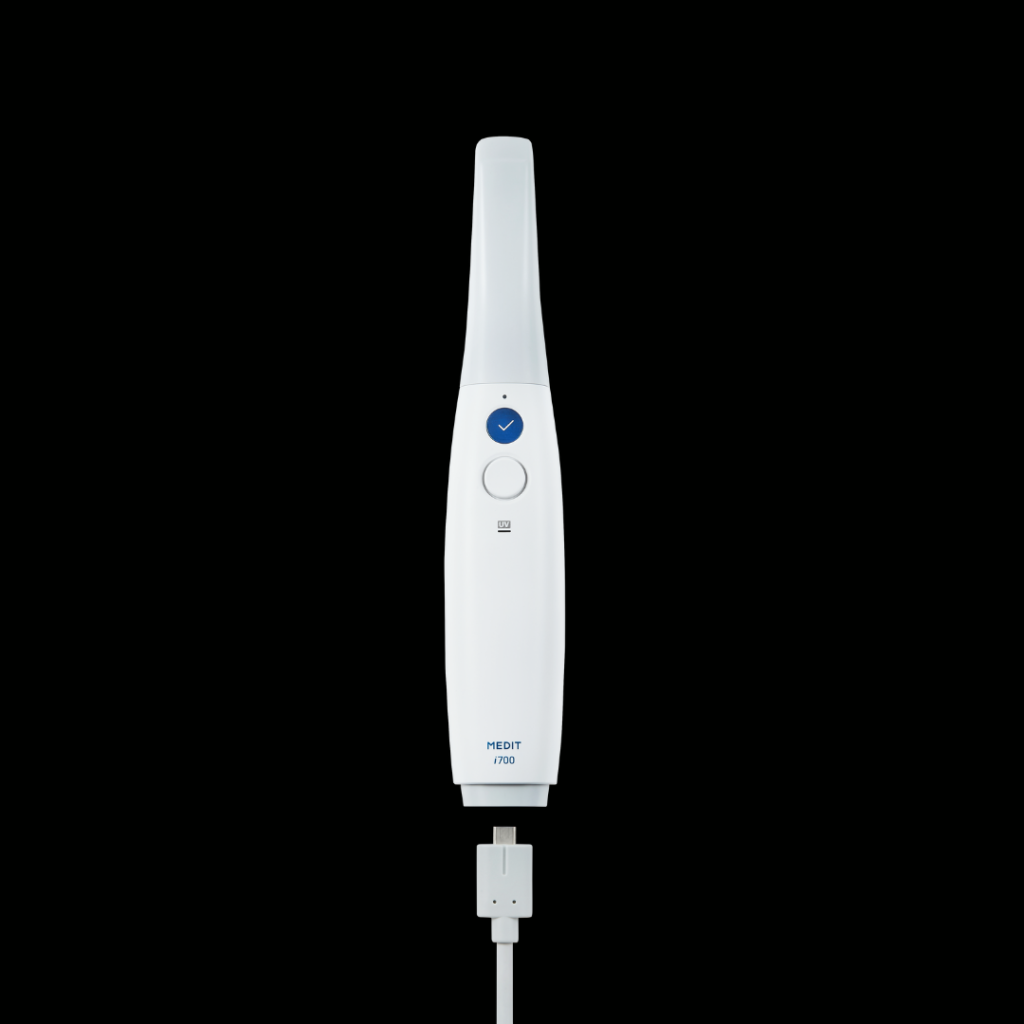


An intraoral scanner is a cutting-edge dental technology that enables the digital capture of a patient’s teeth and gums in 3D, providing high-resolution images for a variety of dental applications. The scanner uses a small, handheld wand with a camera at the tip to capture images of the patient’s teeth and gums from different angles, creating a 3D digital model of the oral cavity. Intraoral scanners are revolutionizing dentistry by providing a more accurate and efficient alternative to traditional dental impression techniques, such as putty or silicone molds. This technology is becoming increasingly popular in dental practices and labs, as it saves time and provides a more comfortable patient experience. The benefits of intraoral scanning include improved accuracy and precision of dental restorations, reduced turnaround time for restorations, and increased efficiency and productivity for dental labs. Intraoral scanning also allows for more comprehensive treatment planning and communication between the dentist, lab, and patient. In addition, the digital models created by intraoral scanners can be easily stored and shared, reducing the need for physical storage space and transportation of impressions. With the continuous advancements in digital dentistry, intraoral scanners are becoming an essential tool in modern dental practices and labs, improving the quality of patient care and outcomes.
Intraoral scanners are increasingly becoming popular in dentistry as they offer numerous benefits over traditional dental impression techniques. Here are some of the key benefits of intraoral scanners:
Intraoral scanners are a game-changer in the field of dentistry, offering numerous benefits for patients and dental professionals alike. The technology improves the accuracy and precision of dental restorations, reduces turnaround time, improves the patient experience, increases efficiency and productivity, enables comprehensive treatment planning, and seamlessly integrates with CAD/CAM technology.
An intraoral scanner is a highly sophisticated dental technology that provides dental professionals with a range of advanced features. Here are some of the key features of an intraoral scanner for a dental lab:
Intraoral scanners are a highly sophisticated dental technology that offers a range of advanced features to dental professionals. These features include high-resolution imaging, ergonomic design, a built-in touchscreen display, portability, compatibility with CAD/CAM software, real-time feedback, automatic calibration, and user-friendly software. Together, these features make intraoral scanners an essential tool for dental labs looking to provide the highest quality care to their patients.
Intraoral scanners are a powerful and versatile tool that can be used in a wide range of dental applications. Here are some of the key use cases for intraoral scanners in a dental lab:
Intraoral scanners are a highly versatile tool that can be used in a wide range of dental applications. They are particularly useful in digital impressions, orthodontics, implant planning, prosthodontics, cosmetic dentistry, patient education, time savings, and waste reduction. These use cases make intraoral scanners an essential tool for dental labs looking to provide the highest quality care to their patients while improving their efficiency and sustainability.
Intraoral scanners have revolutionized the way dental professionals capture images of a patient’s teeth and gums. Compared to traditional dental impression techniques, intraoral scanners offer a range of advantages that can improve the accuracy, efficiency, and overall patient experience. Here are some key differences between intraoral scanners and traditional dental impression techniques:
Intraoral scanners offer a range of advantages over traditional dental impression techniques. They provide higher accuracy, greater efficiency, and a more comfortable patient experience. While they may be more expensive, their ability to reduce errors, improve communication, and reduce waste can make them a valuable investment for dental practices looking to provide the highest quality care to their patients.
The benefits and use cases of intraoral scanners have demonstrated their ability to revolutionize the field of digital dentistry. The accuracy and efficiency of these scanners have made them an indispensable tool for dental professionals seeking to provide the highest quality care to their patients. The use cases for intraoral scanners continue to expand, as the technology is evolving to include applications such as orthodontics, implant planning, and more. The ease of communication and collaboration facilitated by digital images has improved the workflow and coordination between dental professionals and dental labs, resulting in faster turnaround times and increased patient satisfaction.
As intraoral scanners become more advanced and affordable, their adoption is expected to increase, transforming the way dental practices operate. With the elimination of physical impressions, intraoral scanners are helping to reduce the environmental impact of dental practices, while providing a more comfortable and less invasive experience for patients. The evolution of intraoral scanners is a testament to the power of digital dentistry to improve patient outcomes and transform the dental industry. Overall, intraoral scanners are a valuable investment for dental practices looking to provide the highest level of care and stay at the forefront of dental technology.
Hillstone Dental Lab is a professional dental laboratory that specializes in creating high-quality dental restorations, including crowns, bridges, and implants.

Copyright © 2023 All rights reserved.
Hillstone Dental Lab is a professional dental laboratory that specializes in creating high-quality dental restorations, including crowns, bridges, and implants.

Copyright © 2023 All rights reserved.